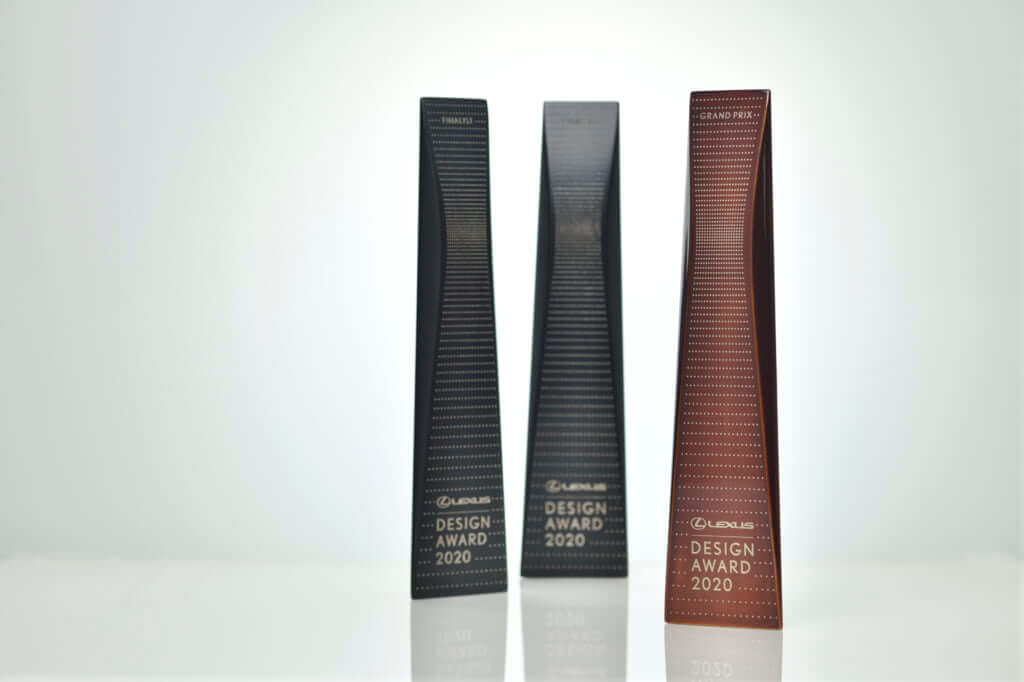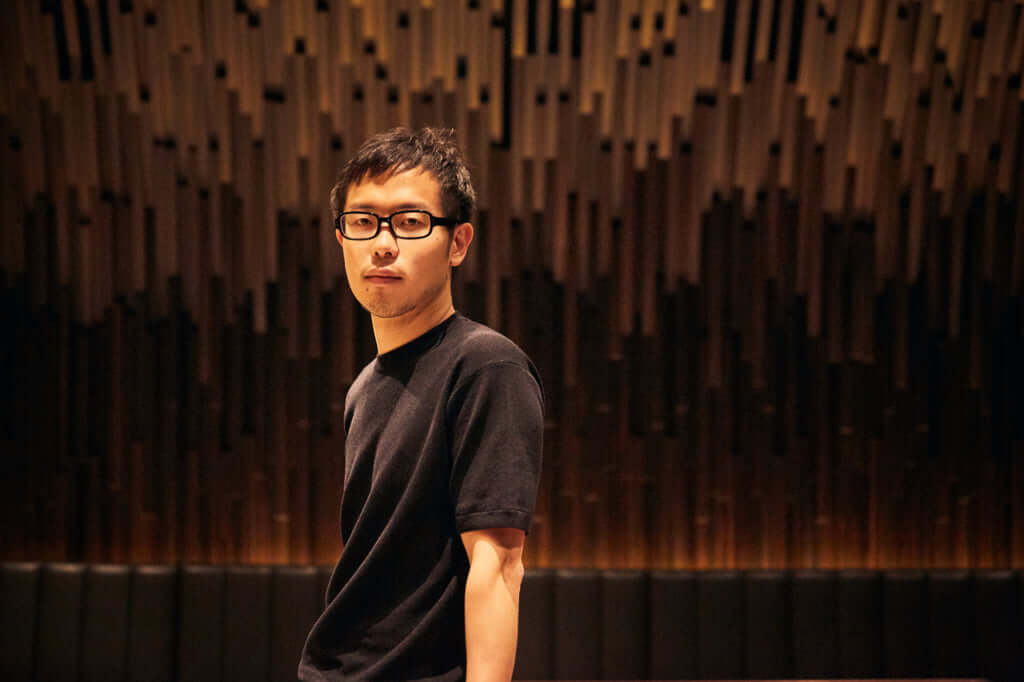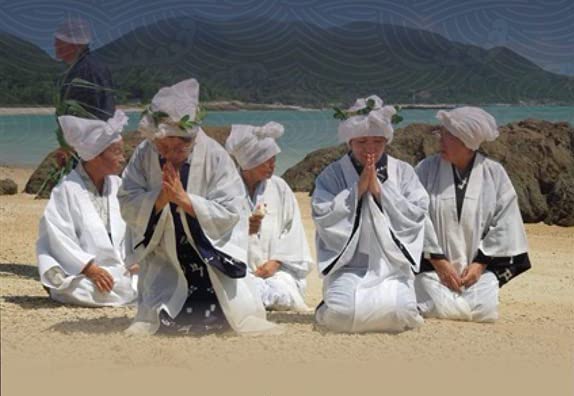The Winner Takes Hold of the Kawatsura x TANGENT Trophy
The trophy awarded to the 8th LEXUS DESIGN AWARD winner was created by an up-and-coming Japanese designer who made use of Akita’s traditional crafts.
The LEXUS DESIGN AWARD is an international design competition focused on up-and-coming creators. The finalists and the Grand Prix winner of the 8th competition were presented with a trophy made of Kawatsura lacquerware, a traditional craft cultivated in Akita Prefecture in the Tohoku region. Kawatsura lacquerware, which boasts a history of approximately 800 years, began with the application of lacquer to the armour and weapons of the shogunate. While lacquerware is produced in various regions throughout Japan, Kawatsura lacquerware is characterised by a strong finish, achieved by applying raw lacquer directly to the wood base.

The trophy, carved from a simple prism-shaped piece of wood, has the form of a ‘spindle grille’, a symbol of Lexus. The intricate dots are inspired by the mesh pattern on the front grille of a car.
The design was conceived by Hideki Yoshimoto, a Japanese designer based in the UK. Hideki Yoshimoto has an impressive background; after completing a master’s degree in space engineering at the University of Tokyo, he went on to enrol at the Royal College of Art, where he received his doctorate in design engineering. In 2013, he won the first ever LEXUS DESIGN AWARD with his work, ‘INAHO.’ Founder of the design studio TANGENT in London, he is currently attracting attention worldwide for his work creating installations for Hermes.

Hideki Yoshimoto
The basic process of making Kawatsura lacquerware is to smoke-dry the wood, cut it into the desired shape, and then apply the lacquer coating, most of which now can be completed with the help of machinery; for this particular trophy, however, the entire process was carried out by hand craftsmen. The trophy for the Grand Prix winner was coloured using a technique called Byakudan, in which the wood base is coated with a silver powder and is then painted with transparent lacquer. The dark-brown surface is exposed to ultraviolet rays little by little over a long period of time, until it eventually begins to glitter. As Hideki Yoshimoto personally knows, becoming the Grand Prix winner means that your professional career has begun. By using Kawatsura lacquerware, whose beauty increases over time, Hideki Yoshimoto perhaps alludes to the winner’s own image, which is likewise honed as they grow into a professional.
TRENDING
-
The Tradition of the Black Eggs of Mount Hakone
In the volcanic valley of Owakudani, curious looking black eggs with beneficial properties are cooked in the sulphurous waters.

-
The Tattoos that Marked the Criminals of the Edo Period
Traditional tattoos were strong signifiers; murderers had head tattoos, while theft might result in an arm tattoo.

-
Gashadokuro, the Legend of the Starving Skeleton
This mythical creature, with a thirst for blood and revenge, has been a fearsome presence in Japanese popular culture for centuries.

-
‘YUGEN’ at Art Fair Tokyo: Illumination through Obscurity
In this exhibition curated by Tara Londi, eight international artists gave their rendition of the fundamental Japanese aesthetic concept.

-
An Encounter with the Last Shamans in Japan
Sociologist Muriel Jolivet's book offers an analysis combined with a travelogue and interviews with these women with supernatural powers.





